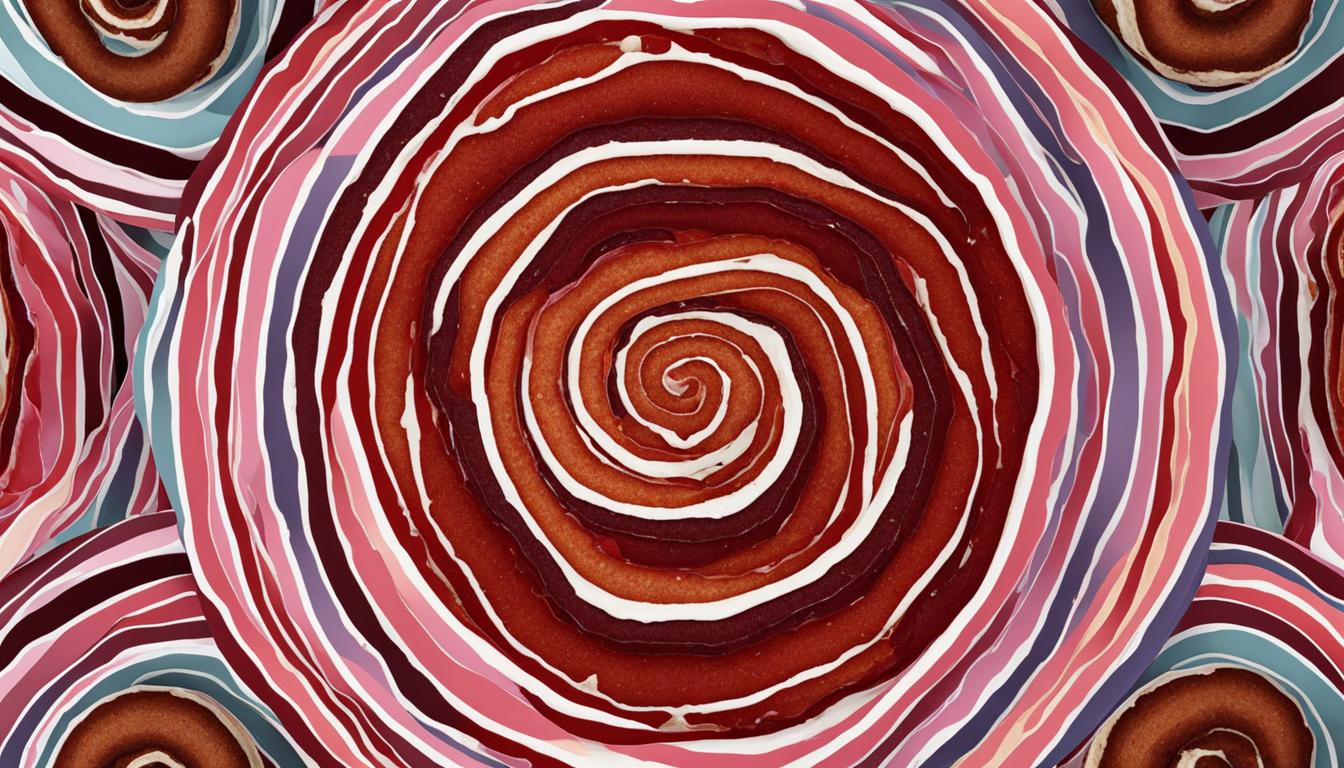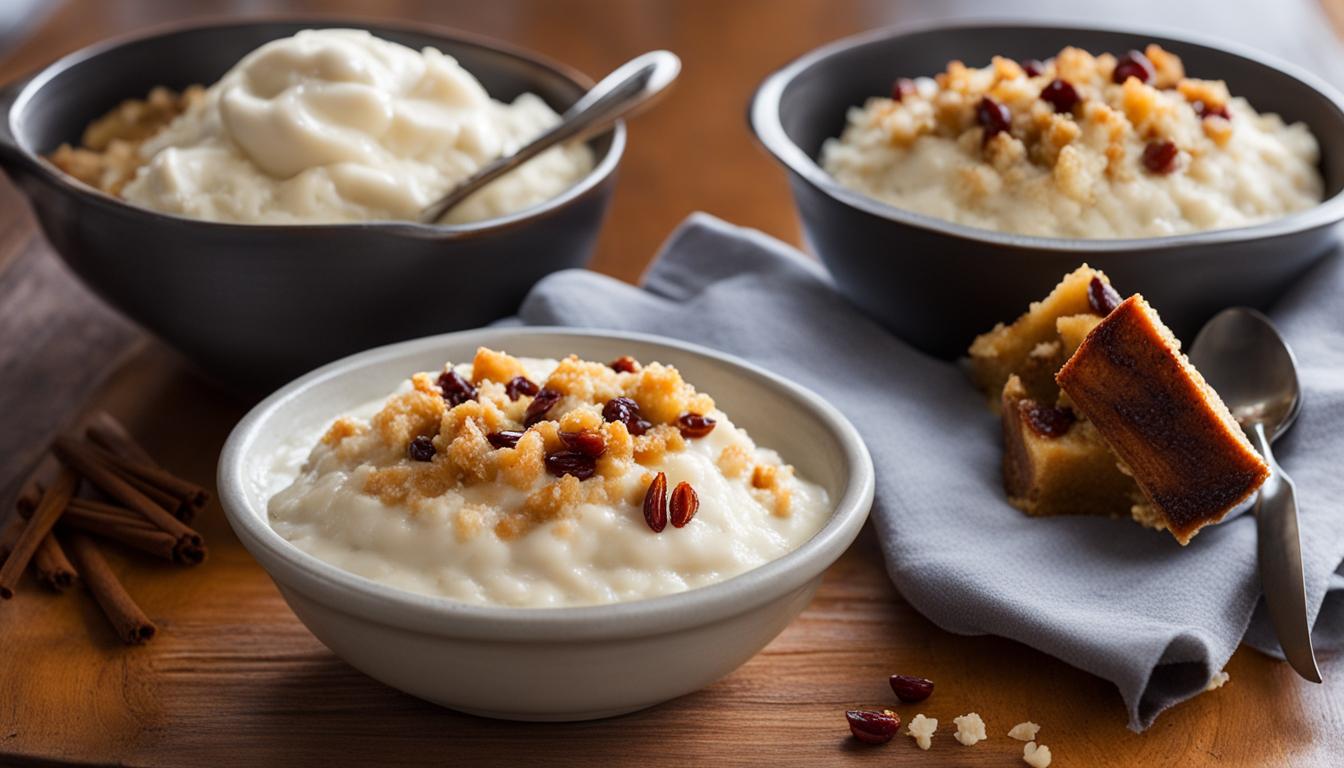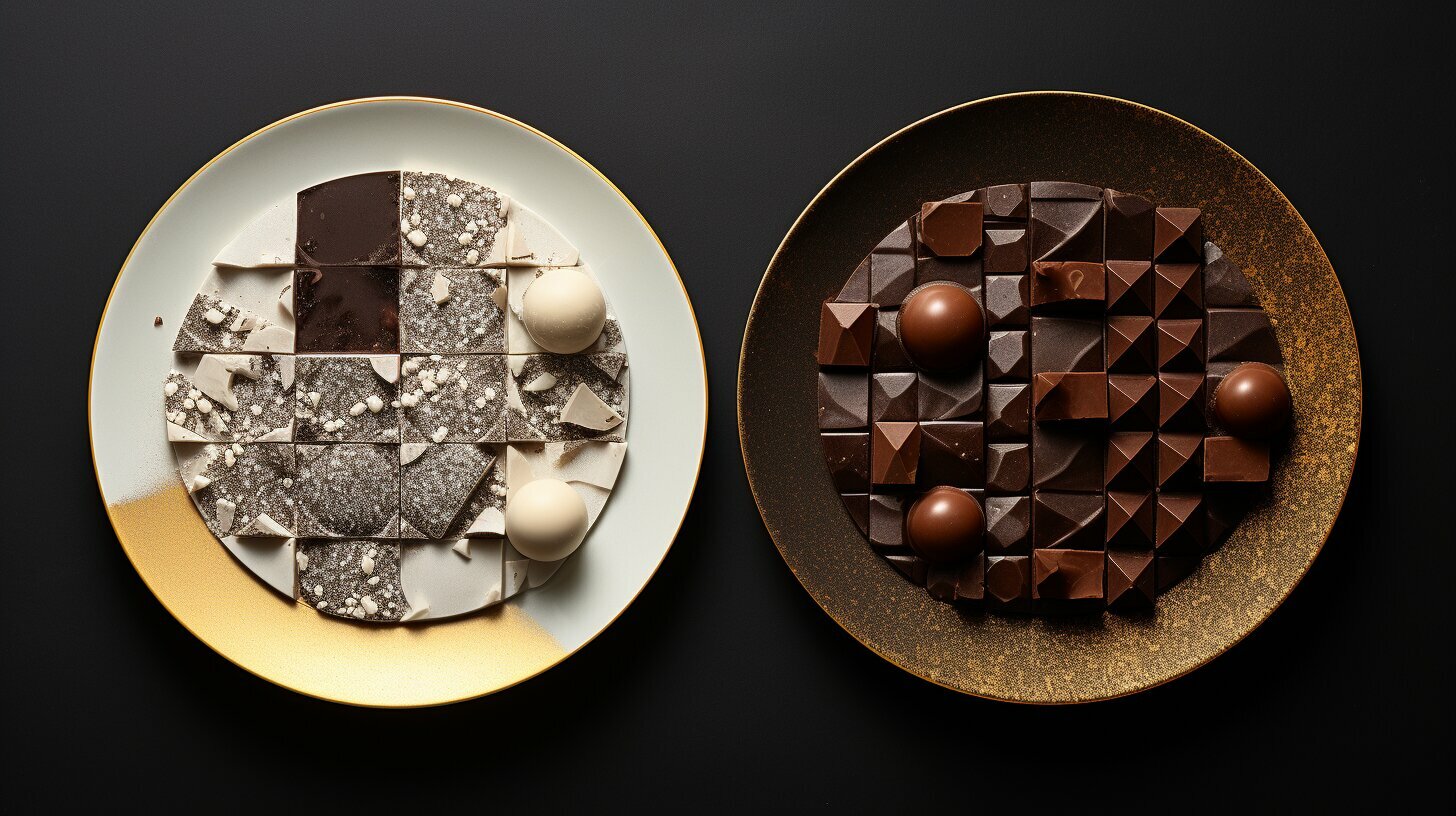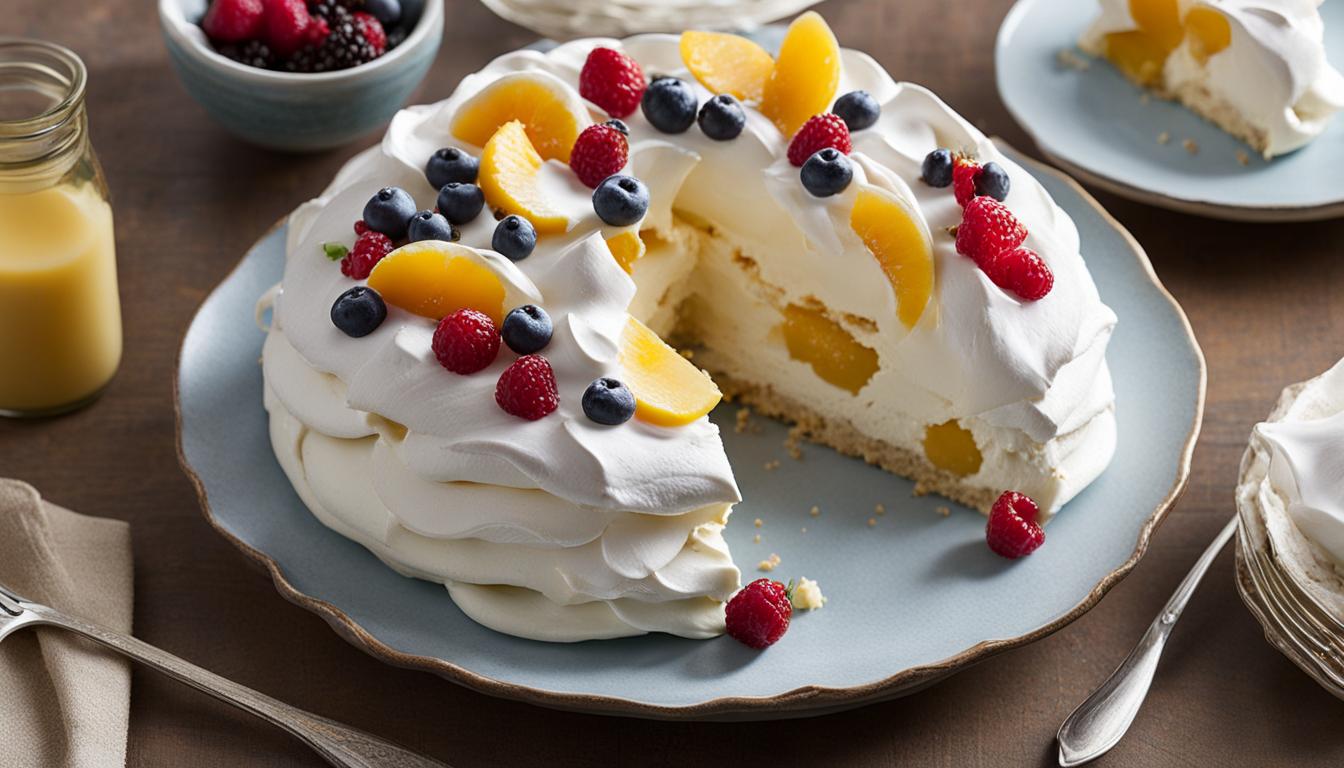In the world of rolled cakes, two popular choices stand out: the Swiss Roll and the Jelly Roll. While these desserts may appear similar at first glance, they possess unique characteristics that set them apart. Understanding the distinction between Swiss Rolls and Jelly Rolls will allow you to appreciate their individual flavors and textures.
Key Takeaways:
- The Swiss Roll and the Jelly Roll are both rolled cakes, but they differ in composition and presentation.
- A Swiss Roll is made with a sponge cake base and can have various fillings, while a Jelly Roll is specifically filled with jelly or jam.
- The Swiss Roll has a thinner and more compact spiral shape, while the Jelly Roll has a softer and more irregular shape due to the filling.
- The choice of sponge cake affects the overall taste and texture of the Swiss Roll.
- The origin and naming of Swiss Rolls have cultural variations and regional differences.
Sponge Cake Explained
A Swiss Roll is known for its light and fluffy texture, which is achieved through the use of a sponge cake as the base. The sponge cake is a versatile cake that forms the foundation for many rolled desserts. When it comes to Swiss Rolls, two popular types of sponge cakes are commonly used: Genoise sponge cake and chiffon cake.
The Genoise sponge cake is a classic choice for Swiss Rolls. It is made by beating eggs and sugar together until they become light and fluffy. Then, flour and melted butter are gently folded into the mixture to create a batter that rises beautifully in the oven. The resulting Genoise sponge cake is denser and drier compared to other sponge cakes, making it ideal for supporting the filling and maintaining the shape of the rolled Swiss Roll.
Another option for the sponge cake in a Swiss Roll is the chiffon cake. This cake incorporates oil into the batter, which gives it a moist and tender crumb. The chiffon cake is made by whipping egg whites separately and then folding them into a mixture of flour, sugar, oil, and other flavorings. The addition of oil adds moisture to the cake, resulting in a lighter and more delicate texture compared to the Genoise sponge cake. The chiffon cake is often a preferred choice when a softer and moister Swiss Roll is desired.

Comparison of Genoise Sponge Cake and Chiffon Cake for Swiss Rolls:
| Genoise Sponge Cake | Chiffon Cake |
|---|---|
| Denser and drier texture | Lighter and more moist texture |
| Contains butter for added richness | Contains oil for added moisture |
| Supports the filling and maintains the shape of the Swiss Roll well | Creates a softer and more delicate Swiss Roll |
Table: Comparison of Genoise Sponge Cake and Chiffon Cake for Swiss Rolls
The Origin and Naming of Swiss Roll
The Swiss Roll cake is a beloved dessert that has captured the hearts and taste buds of people around the world. But have you ever wondered about the origin of this delightful treat and how it got its name?
Although the exact origins of the Swiss Roll are unclear, it is believed to have originated in Central Europe, possibly in Austria or Slovenia. However, what is interesting is that the Swiss themselves refer to similar log-shaped cakes as Roulade or Biskuitroulade. So, how did this delectable dessert come to be called the Swiss Roll?
The reason behind the naming of the Swiss Roll remains a mystery. The name “Swiss Roll” gained popularity outside of Switzerland, and different countries have their own variations and names for this type of cake. In the United States, it is commonly known as the Jelly Roll. The diverse names and regional variations add to the cultural richness and international appeal of this delightful dessert.
| Origin | Naming |
|---|---|
| Believed to have originated in Central Europe, possibly Austria or Slovenia. | Unclear. The name “Swiss Roll” gained popularity outside of Switzerland, while Swiss themselves refer to it as Roulade or Biskuitroulade. |
Whether you call it a Swiss Roll, a Jelly Roll, or by any other name, one thing is for certain – this rolled cake is a true delight for dessert lovers everywhere. Its light and airy sponge cake base, filled with various flavors and rolled into a beautiful spiral, make it a visually stunning and delectable treat.
So, the next time you enjoy a slice of Swiss Roll, take a moment to appreciate the origins and diverse names associated with this beloved dessert.
Visual Differences: Swiss Roll vs Yule Log
Aesthetically, Swiss Rolls and Yule Logs have distinct visual differences that set them apart. Swiss Rolls are often left uncovered or lightly iced, highlighting the beautiful spiral pattern created by the rolling process. The focus is on the layers of cake and filling, resulting in a more minimalist and elegant appearance. On the other hand, Yule Logs are heavily decorated to resemble an actual log, evoking a festive and rustic feel. They are often adorned with a thick layer of icing, marzipan figurines, and even spruce branches, creating a visually striking centerpiece for holiday celebrations.
While both cakes are rolled, the way they are presented is quite different. Swiss Rolls showcase the intricate spiral shape when sliced, showcasing the layers of cake and filling. In contrast, Yule Logs are typically served as a whole, resembling a log that has been cut from a tree. The shape and decoration of the Yule Log contribute to its unique visual appeal, making it a centerpiece that is as delightful to look at as it is to eat.

Differences in Fillings
Not only do Swiss Rolls and Yule Logs differ visually, but they also have distinct filling options. Swiss Rolls offer a wide variety of fillings, ranging from creams and custards to jams and fruits. This versatility allows for endless flavor combinations and caters to different preferences. The fillings in Swiss Rolls tend to be lighter and more delicate, complementing the texture and taste of the sponge cake.
On the other hand, Yule Logs are typically filled with dense creams like buttercream or ganache. These rich and indulgent fillings add a luxurious touch to the cake, creating a decadent dessert that is perfect for festive occasions. The dense filling supports the structure of the Yule Log and adds a luscious mouthfeel to each bite.
Summary
In summary, Swiss Rolls and Yule Logs not only differ in their visual appearance but also in their fillings. Swiss Rolls are characterized by a spiral shape, minimal decoration, and a variety of lighter fillings. Yule Logs, on the other hand, have a more elaborate presentation, resembling a log with intricate decorations and dense, indulgent fillings. Both cakes offer unique experiences, catering to different tastes and occasions.
Conclusion
In conclusion, the Swiss Roll and the Jelly Roll are two distinct variations of rolled cakes. While both cakes share similarities in their rolled form, they have notable differences in composition and appearance that set them apart.
The Swiss Roll is made with a sponge cake base and offers a range of filling options, resulting in a compact spiral shape. Its thinner base allows for a tighter roll, creating a more uniform and visually appealing dessert. With a variety of cream, jam, or fruit fillings to choose from, the Swiss Roll offers versatility for taste and presentation.
On the other hand, the Jelly Roll is specifically filled with jelly or jam, resulting in a looser and softer texture. Its thicker and softer base, combined with the filling, creates a more irregular shape. The simplicity of the Jelly Roll, with its focus on the jelly or jam filling, offers a delightful and nostalgic treat.
Whether you prefer the Swiss Roll’s delicate and compact spiral or the Jelly Roll’s soft and playful texture, both cakes provide delicious options for any occasion. The choice between the Swiss Roll and the Jelly Roll ultimately comes down to personal taste and the desired aesthetic. So, whether you’re craving a classic Swiss Roll or a nostalgic Jelly Roll, these rolled cakes are sure to satisfy your sweet tooth.
FAQ
What is the difference between a Swiss Roll and a Jelly Roll?
While both are types of rolled cakes, a Swiss Roll is typically made with a sponge cake base and can have various fillings, while a Jelly Roll specifically contains jelly or jam as the filling.
What kind of cake is used for a Swiss Roll?
The traditional Swiss Roll is made with a Genoise sponge cake, but modern variations may use different types of sponge cakes, such as chiffon cake.
Where did the Swiss Roll originate and why is it called Swiss Roll?
The Swiss Roll is believed to have originated in Central Europe, possibly in Austria or Slovenia. The name “Swiss Roll” gained popularity outside of Switzerland, and different countries have their own variations and names for this type of cake.
How does a Swiss Roll differ from a Yule Log?
Swiss Rolls are typically left uncovered or lightly iced, with a focus on the spiral pattern created by the rolling. Yule Logs, on the other hand, are heavily decorated to resemble an actual log and are filled with dense creams like buttercream or ganache.



